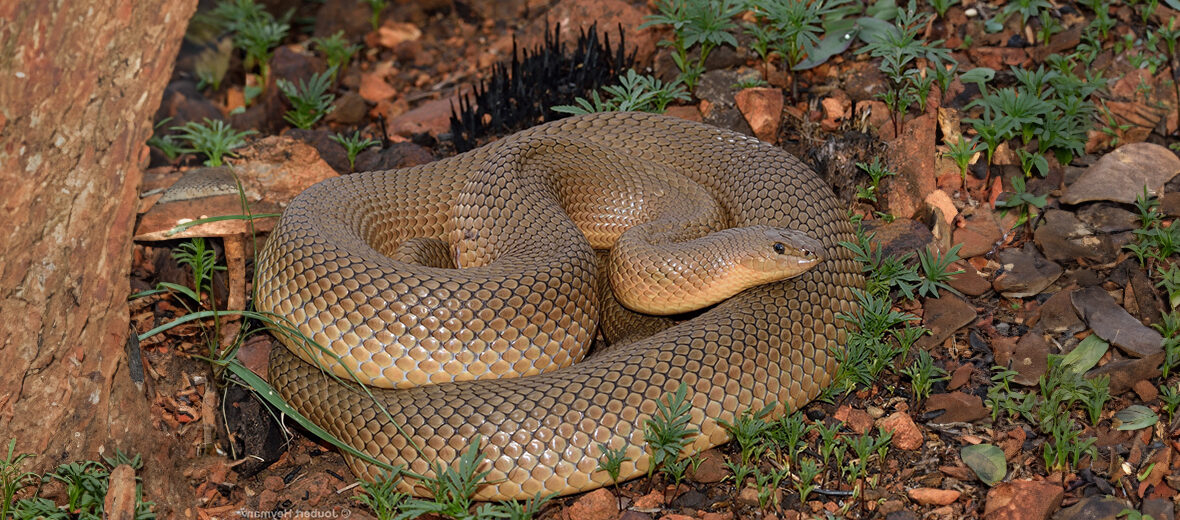
The mole snake is native to most of southern Africa. These nonvenomous colubrids are known for their ferociousness, and can deal a painful bite. Even though they face the threats of habitat loss and degradation at the hands of residential and commercial developments, and agricultural intensification; plus persecution due to misidentification resulting in the confusion that they are venomous, these snakes are still abundant and thus listed as Least Concern by the IUCN. Their population trend is unknown at this time.
First the Stats…
Scientific name: Pseudaspis cana
Weight: Up to 3+ lbs.
Length: Up to 6.7 feet
Lifespan: Up to 30 years
Now on to the Facts!
1.) Honey badgers are known predators of these snakes.
2.) Their body is predominantly 1 color, and varies from yellow, to grey, to brown, and in some instances, solid black.
3.) Young snakelets have a patterned and even spotted coloration that fades as they age.
4.) The coloration darkens the further south they get, and lightens in the northern ranges.
5.) Their primary food of choice is the golden mole, with other rodents making up the balance of their diet. Hence their common name “mole” snake.
But wait, there’s more on the mole snake!
6.) They also occasionally prey on the eggs of seafaring birds.
7.) These snakes tolerate a wide range of habitats like the scrublands of the South African Cape and the Highveld plateaux, grasslands, desert areas, and mountainous regions.
Did you know…?
Even though they are not venomous, they can deliver a very painful bite if mishandled, due to their razor-like teeth. However, despite this defensiveness, these snakes are still kept in captivity and are said to become more docile with frequent handling.
8.) Being viviparous, the females birth live young.
9.) Females can birth up to 95 snakelets, with the average being 25 – 50!
10.) The young measure 11.81 inches in length.
11.) Mole snakes are diurnal (active during the day).
Now a Short Mole Snake Video!
Be sure to share & comment below! Also, check out the Critter Science YouTube channel. Videos added regularly!
Want to suggest a critter for me to write about? Let me know here.
Some source material acquired from: Wikipedia & IUCN
Photo credit: iNaturalist



